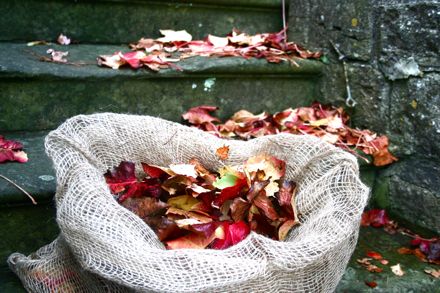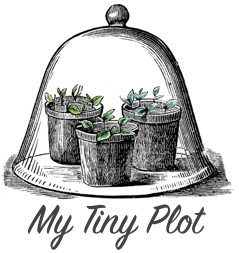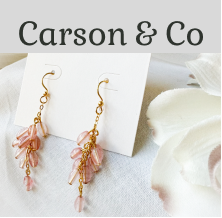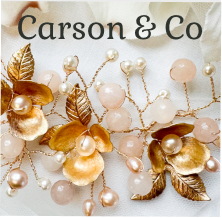Making Leaf Mould

My Tiny Plot is surrounded by leaves. On one side there are evergreen Laurel bushes. The south-facing wall is topped by deciduous Ivy, then half our house is covered in Wisteria that sheds its leaves too.
Consequently, at this time of year the ground is thick with Autumnal leaves – even the Laurel seems to shed the odd one or two. So, it’s high time that I stopped filling the council’s leaf mould pile and started my own.
When I first moved into the house the garden was a wreck. Apparently, the previous owner were not ‘into’ gardening. You don’t say? There was a five inch thick layer of something thick and black and crumbly on the roof of the outhouse. Part of the roof had caved in under the weight there was that much of it. What was it? – leaf mould. The leaves had been falling for so many years, untouched that the good stuff had just built up and up.
I tried to salvage as much of it as I could and dug it into my new garden. But that’s the last time mtp has seen any leaf mould (two years ago). But this year I’m determined to bring it back. So, using my Love Em’ and Leave Em’ leaf sack, I’ve started to collect the fallen leaves and I’m hopeful for some blackstuff come next year.
Here’s a few things I’ve discovered about making leaf mould.
- The leaves that can be easily turned into leaf mould are Oak, Alder and Hornbeam. They will soon rot down, but Sycamore, Beech and Horse chestnut might take a little longer.
- Some people will suggest that you don’t use conifers and evergreen plants. You can but it will take between two and three years for them to decompose. They’re best added in small quantities, shredding them first will help to speed up the process.
Anyone else have experience producing leaf mould. I’ve heard you can use a black plastic bag with holes in in the same way.
 My Tiny Plot
My Tiny Plot



I try and get all my clients to compost leaves, so lovely to see you’re trying your hand at making “black gold” in a small space.
Yes you can use plastic bags with holes in, (but your sacks look a lot nicer)
the 3 ingredients for good leaf mould are
wet leaves, air, and time (18months – 2 yrs in my experience).
more details on
http://plant-passion.typepad.com/plant_passion/2009/10/falling-leaves-turn-them-into-plant-food-and-mulch.html
We use black bags, but we find that ‘something’ burrows in and makes little holes and tunnels in them. When you pick the bags up they fall apart! I now tend to keep the bags by the compost and empty a layer into the heap as and when it needs a bit of browness to counteract too much greenery.
When I had my first house with a garden, I didn’t have room for a compost pile but had loads of leathery leaves each fall from a great empress tree. I used to barrow them over to my empty beds (like the potato bed) and just lightly dig them in with a sprinkle of ammonium sulphate. Come spring they were gone and it helped my clay soil no end over the years.
Now I live in the forest and my major problem is invasive weeds. They start up this time of year, so I take my leaves (raked off the driveway) and huge amounts of needles (from great fir trees) and dump them unceremoniously on top of the baby weeds (take that!). There are never enough but it helps take the burden off the springtime weeding!
I even beg leaves/wood chips from the local government clean-up guys when they come through with their big chipper machine, tidying up the roadside trees. They are happy to have a place to dump it. It’s pretty rough-looking stuff but after a month or two, it begins to look more civilized and I find the mulch makes a nice path through the acres of weeds!
It’s funny that you mention that oak leaves composts well. They are actually notorious for slow composting. I wouldn’t go as far as you, but in my opionion it is not so bad as their reputation (at least in the low lands). (And beech and horse chestnut are not too bad either in my experience????)
Here is the good news: you miss an essential ingredient to speed up composting and to better the soil: add some chalk. When visiting a famous wood garden they mentioned: just add “a heaven”of chalk on top of the heap (you don’t really need the bags, do you, it is just more tight). By “a heaven” she meant a tiny tiny layer.
It works (we know, we have over 10m3 of cut up, so dense, leaf which we put on heaps, on top of all the leaves which we blow in the borders and odd corners).
I have twenty three trees in my garden. The majority of them old fruit trees ( apples, cherries and plums). And also hazels and walnuts (potentially toxic if not composted properly) plus large bushes which means a few plastic bags won’t be enough for all the leaves I have. Did I mention the massive oak tree?
I have concocted a large leaf compost container from poles and chicken wire and find that I need to water it regularly because even when they’ve been shredded, the oak leaves take two years to break down completely. But it so satisfying to empty the pile of dark crumbly earth at the end.
Just been and ordered some of those great bags… oh the thrill of putting those annoying leaves to some good use!
I had my first go at making leaf mould last year, and it went really well. I spread it out in September this year (so after nearly 1 year). It hadn’t completely decomposed but was nice and crumbly nonetheless. The worms will do the rest. I used plastic bags last year but they were full of holes and fell apart when I picked them up (like Claire said) so I’m using an other type this year.
What a great idea… but can you just compost leaves on their own? We have an unused compost bin that could be used for that purpose
My husband is the compost king! Here’s the formula for success: Air, water, and heat. To heat up the compost nitrogen is the key ingredient. That’s fertilizer. Pile your leaves in a confined space, apply the heat stimulating agent of your choice, and be sure to turn it to give it air and slowly, but surely, you will have a most lovely and enriching compost. We add kitchen vegetable scaps and egg shells to the leaves. Give it a go and good luck!
Leaf mold is a wonderful addition to the garden and will decompose over the course of a year whether just piled up, layered into garden/shrubbery beds (preferably chopped for a neater appearance and to speed up decomposition) or left in the shade in plastic bags with holes in them to allow them to be moistened when dry. Heavy duty plastic bags will hold together for most of the year, and the leaves can be left to decompose or added to a compost pile as “brown” material and/or to cover kitchen or garden waste to keep insects and “critters” at bay.
A mixture of “brown” and “green” (nitrogen) will make a good balanced compost, while leaves left to form leaf mold will not have the nitrogen and micronutrients required for a full spectrum of nutrition for the garden.
I bought the Nutscene jute open bags this year from my garden centre. Much easier to use than trying to fill up lots of plastic bags. And it looks better in the garden! I filled up one on Sunday just from one tree in my front garden! Its my third year and it puts to good use all the leaves.
I used these bags lastyear and they were a big success and are very well camouflaged. Just one thing, the bag very happily also decomposes so put the bag where you might ultimatley like leaf mold to stay on the ground. We have a red oak with very large leaves which take forever to break down in the compost so they are outliving the jute bag!
I was once told that urine speeds up the composting process.
I have 2 boys and I have trained them to ‘pee’ on the compost heap if they are outside playing which they think is a hilarious contribution to the gardening!! Our compost heap is discreetly hidden so I’m not sure this would work for everyone!
I always put my leaves in the compost. I have one of the leaf suckers that chop them up first so they rot down quicker. That way it doesn’t matter what leaves I use (bar evergreens as you mentioned) – they all rot down quickly and nicely and I can turn over/turn out the heap regularly to dig in.
That’s if the hedgehogs don’t steal the compost heap for a birthing nest first!
so if heat is important, what would it be best to use to cover my compost between adding more to it? i have mostly ash leaves and have found they decomposed easily without being chopped. mostly i leave them over the beds all winter and then added anything to the compost in the spring that hadn’t finished decomposing.
I didn’t think that our shabby patch would produce many leaves at all but I have been round today gathering them up and got nearly a sack full!. They are mainly leaves from fruit trees that we have planted as, being on a relatively new development, we don’t have any mature trees. I had never heard of leaf mould until a few weeks ago when I was reading a book. I have put mine in potato growing sack made of hessian type material (I have punched a few of my own holes in for ventilation). I am looking forward to be able to add them to our terrible soil!
Leaf mould is great. I use it every year and I’m sure it’s the best way to better harvest.
I have done some reading online about a composter that can be constructed from a 50 gallon “plastic barrel”, (used primarily for transporting liquid foodstuffs, such as cola syrup). A shaft thru and thru with supporting posts, and with a few refinements, such as a door in the side to add and remove material, a little black paint to attract the sun’s heat and one can construct a composter for the sunny side of the house. (Look for many details online.) This method might replace the plastic bags and eliminate the rodent problem. So far– I have managed to obtain and transport a barrel to my garage where it sits on top of the plastic barrel of organic apple tree limbs with which I shall smoke some pork loin, perhaps next spring. One might consider smoking meat in the Winter time, but we have just had 18″ of the most wonderful snow overnight, (Free for the asking!), which tends to discourage me from any outdoor activity. Skiing is not an option.
Pingback: Leaf Mould